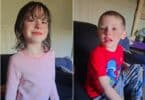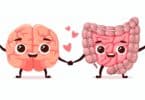
Researchers have known for quite some time that autism has a strong genetic basis. Unfortunately, all efforts to identify the genes responsible for autism have provided very little insight to the condition. Right now, all that is really known is that autism is influenced by a large array of genes, which explains why autism can look very different from one individual to the next as well as why researchers have had such a difficult time finding the common denominator in autistic individuals. All of this may be changing, however, thanks to a new study.
Conducted by Hebrew University in Jerusalem, researchers attempted to find general pathways involved in autism, focusing on gene collections, rather than specific genes. What they found was that, while gene mutations for autistic individuals can vary widely, all of the different genes tend to affect the same specific process in the brain. This may explain why symptom similarities exist among most autistic individuals, despite the fact that not all autistic individuals suffer from the exact same symptoms or to the same degree.
During the study, researchers also found thousands of common gene variants frequently found in autistic individuals, and each mutation or variation was found within specific functional groups. This applied whether the autism was a sporadic case (just one autistic individual known to the family) or multiplex cases (in which there was a family history of autism). They also discovered that these groups of genes are highly active during the first year of life and that those groups were involved in learning, sensory perception and memory.
While the information is still very raw and unusable, the Hebrew University scientists may very well be onto something. With their work, they may be able to conduct larger-scale genetic scans to continue gathering more evidence, possibly producing an earlier, more effective method for testing young children for autism. Overall, it could help improve the lives of autistic individuals. Parents could learn how to parent their autistic child sooner. Schools could know at primary grade levels that the child needs special care. And therapies may be made available sooner, which could help improve their level of functionality.
Related Articles:
- Second Autism-Friendly Broadway Show a Huge Success!
- Can Children “Outgrow” Autism? Experts Look at Why Some Autistic Children “Bloom”
- Autism Numbers Higher Than Previously Thought Says CDC






